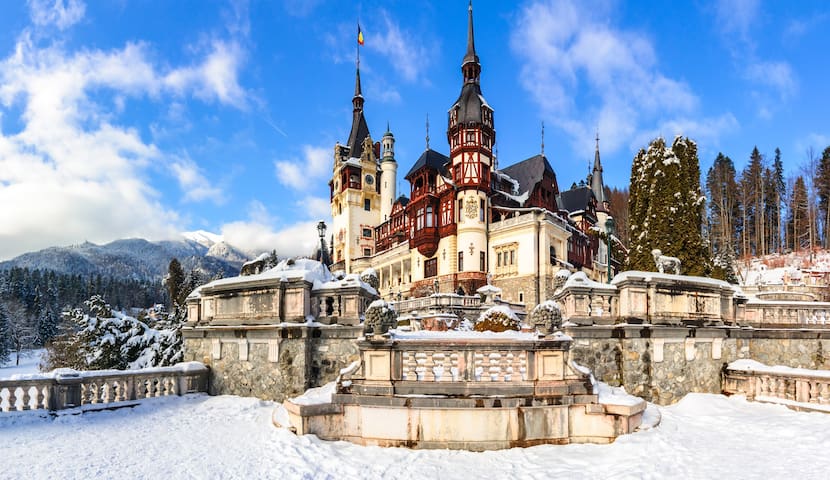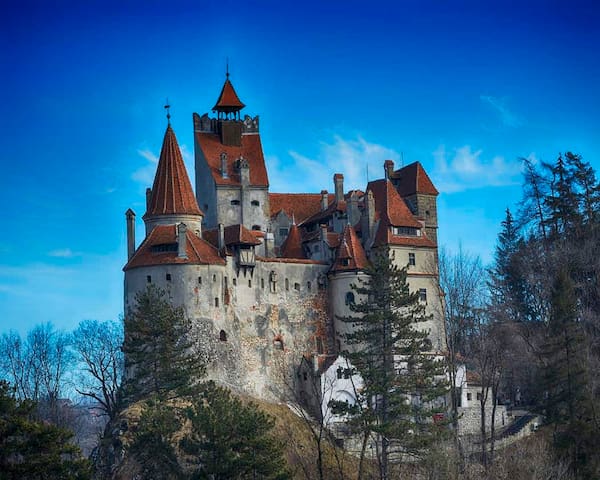Food Scene
They have good food as well as a nice view and horseback riding facility. Good to go for lunch time so you can enjoy the view.
Potcoava Mountain Hideaway
They have good food as well as a nice view and horseback riding facility. Good to go for lunch time so you can enjoy the view.
Neighborhoods
The name "Târgoviște" is a Slavic name which the city acquired in the Middle Ages. It is derived from the Old Bulgarian word for marketplace "търговище" (pronounced [tərˈɡɔviʃtɛ]), referring to the place rather than the market itself, which might suggest that the market (târg) may have at one time been temporarily interrupted.
In the 14th century, the capital of Wallachia was Curtea de Argeș, however, due to Târgoviște's economic growth, toward the end of the century, it became a secondary residence of the Wallachian hospodar. In 1396, Bavarian traveler Johann Schiltberger mentions both Curtea de Argeș and Târgoviște as capitals of Wallachia
Throughout the period it was the capital of Wallachia, the Princely Court in Târgoviște [ro] (Curtea Domnească din Târgoviște) had been constantly refurbished and extended. The compound was surrounded by stone walls and a moat and a new church and a tower had been built.[5] Vlad III Dracula ("the Impaler") later added the Chindia Tower, now a symbol of the city.
Târgoviște
The name "Târgoviște" is a Slavic name which the city acquired in the Middle Ages. It is derived from the Old Bulgarian word for marketplace "търговище" (pronounced [tərˈɡɔviʃtɛ]), referring to the place rather than the market itself, which might suggest that the market (târg) may have at one time been temporarily interrupted.
In the 14th century, the capital of Wallachia was Curtea de Argeș, however, due to Târgoviște's economic growth, toward the end of the century, it became a secondary residence of the Wallachian hospodar. In 1396, Bavarian traveler Johann Schiltberger mentions both Curtea de Argeș and Târgoviște as capitals of Wallachia
Throughout the period it was the capital of Wallachia, the Princely Court in Târgoviște [ro] (Curtea Domnească din Târgoviște) had been constantly refurbished and extended. The compound was surrounded by stone walls and a moat and a new church and a tower had been built.[5] Vlad III Dracula ("the Impaler") later added the Chindia Tower, now a symbol of the city.
Sinaia (Romanian pronunciation: [siˈnaja]) is a town and a mountain resort in Prahova County, Romania. It is situated in the historical region of Muntenia. The town was named after Sinaia Monastery of 1695, around which it was built. The monastery in turn is named after the Biblical Mount Sinai. King Carol I of Romania built his summer home, Peleș Castle, near the town in the late nineteenth century.
The city is a popular destination for hiking and winter sports, especially downhill skiing. Among the tourist landmarks, the most important are Peleș Castle, Pelișor Castle, Sinaia Monastery, Sinaia Casino, Sinaia train station, and the Franz Joseph and Saint Anne Cliffs. Sinaia was also the summer residence of the Romanian composer George Enescu, who stayed at the Luminiș villa.
36 lokalkjente anbefaler
Sinaia
Sinaia (Romanian pronunciation: [siˈnaja]) is a town and a mountain resort in Prahova County, Romania. It is situated in the historical region of Muntenia. The town was named after Sinaia Monastery of 1695, around which it was built. The monastery in turn is named after the Biblical Mount Sinai. King Carol I of Romania built his summer home, Peleș Castle, near the town in the late nineteenth century.
The city is a popular destination for hiking and winter sports, especially downhill skiing. Among the tourist landmarks, the most important are Peleș Castle, Pelișor Castle, Sinaia Monastery, Sinaia Casino, Sinaia train station, and the Franz Joseph and Saint Anne Cliffs. Sinaia was also the summer residence of the Romanian composer George Enescu, who stayed at the Luminiș villa.
Bran (German: Törzburg; Hungarian: Törcsvár) is a commune in Brașov County, Romania. It lies at 30 km from the city of Brașov and is composed of five villages: Bran, Poarta (Hungarian: Porta), Predeluț (Kispredeál), Șimon (Simon) and Sohodol (Szohodol).
The medieval Bran Castle, which was once besieged by Vlad the Impaler, is a popular tourist destination, partly because it resembles the home of Dracula in Bram Stoker's novel.
Bran Castle (Romanian: Castelul Bran; German: Törzburg; Hungarian: Törcsvár), situated near Bran and in the immediate vicinity of Brașov, is a national monument and landmark in Romania. The fortress is situated on the Transylvanian side of the historical border with Wallachia, on DN73.
Commonly known outside Romania as Dracula's Castle (although it is one among several locations linked to the Dracula legend, including Poenari Castle and Hunyadi Castle), it is often erroneously referred to as the home of the title character in Bram Stoker's Dracula. There is no evidence that Stoker knew anything about this castle, which has only tangential associations with Vlad the Impaler, voivode of Wallachia, the putative inspiration for Dracula. Dutch author Hans Corneel de Roos proposes as the location for Castle Dracula an empty mountain top, Mount Izvorul Călimanului, 2,033 meters (6,670 ft) high, located in the Călimani Alps near the former border with Moldavia. Stoker's description of Dracula's crumbling fictional castle also bears no resemblance to Bran Castle.
The castle is now a museum dedicated to displaying art and furniture collected by Queen Marie. Tourists can see the interior on their own or by a guided tour. At the bottom of the hill is a small open-air museum exhibiting traditional Romanian peasant structures (cottages, barns, water-driven machinery, etc.) from the Bran region.
38 lokalkjente anbefaler
Bran
Bran (German: Törzburg; Hungarian: Törcsvár) is a commune in Brașov County, Romania. It lies at 30 km from the city of Brașov and is composed of five villages: Bran, Poarta (Hungarian: Porta), Predeluț (Kispredeál), Șimon (Simon) and Sohodol (Szohodol).
The medieval Bran Castle, which was once besieged by Vlad the Impaler, is a popular tourist destination, partly because it resembles the home of Dracula in Bram Stoker's novel.
Bran Castle (Romanian: Castelul Bran; German: Törzburg; Hungarian: Törcsvár), situated near Bran and in the immediate vicinity of Brașov, is a national monument and landmark in Romania. The fortress is situated on the Transylvanian side of the historical border with Wallachia, on DN73.
Commonly known outside Romania as Dracula's Castle (although it is one among several locations linked to the Dracula legend, including Poenari Castle and Hunyadi Castle), it is often erroneously referred to as the home of the title character in Bram Stoker's Dracula. There is no evidence that Stoker knew anything about this castle, which has only tangential associations with Vlad the Impaler, voivode of Wallachia, the putative inspiration for Dracula. Dutch author Hans Corneel de Roos proposes as the location for Castle Dracula an empty mountain top, Mount Izvorul Călimanului, 2,033 meters (6,670 ft) high, located in the Călimani Alps near the former border with Moldavia. Stoker's description of Dracula's crumbling fictional castle also bears no resemblance to Bran Castle.
The castle is now a museum dedicated to displaying art and furniture collected by Queen Marie. Tourists can see the interior on their own or by a guided tour. At the bottom of the hill is a small open-air museum exhibiting traditional Romanian peasant structures (cottages, barns, water-driven machinery, etc.) from the Bran region.


